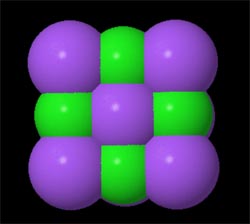What is the Difference between LDL and HDL ?
The LDL contains the apolipoproteins B-100 (Apo B-100, a protein with 4536 amino acid residues) ONLY.[1] It also contains antioxidative vitamins (vitamin E or carotinoids). It is commonly referred to as bad cholesterol as high LDL levels can lead to cardiovascular disease. Because LDLs transport cholesterol to the arteries, increased levels are associated with atherosclerosis, and thus myocardial infarction, stroke and peripheral vascular disease. This is why cholesterol inside LDL lipoproteins is called bad cholesterol. Still, it is not the cholesterol that is bad; it is instead how and where it is being transported, and in what amounts over time. Increasing evidence has revealed that the concentration and size of the LDL particles more powerfully relates to the degree of atherosclerosis progression than the concentration of cholesterol contained within all the LDL particles.
LDL cholesterol of less than 100 mg/dL is the optimal level. Less than 130 mg/dl is near optimal for most people. A high LDL level (more than 160 mg/dl or 130 mg/dl or above if you have two or more risk factors for cardiovascular disease) reflects an increased risk of heart disease.
High-density lipoproteins (HDL) form a class of lipoproteins, varying somewhat in their size (8-11 nm in diameter) and contents, that carry cholesterol from the body's tissues to the liver. Because HDL can remove cholesterol from atheroma within arteries, and transport it back to the liver for excretion or re-utilization, they are sometimes called "good cholesterol". When measuring cholesterol, any contained in HDL particles serves as protection to the body's cardiovascular health. (In contrast to "bad" LDL cholesterol.) Epidemiological studies have shown that high concentrations of HDL (over 60 mg/dl) have protective value against cardiovascular diseases (such as ischemic stroke and myocardial infarction). Low concentrations of HDL (below 40 mg/dl for men, below 50 mg/dl for women) are a positive risk factor for these atherosclerotic diseases.
What is Lp(a) cholesterol? LP(a) is a genetic variation of plasma LDL. A high level of LP(a) is an important risk factor for developing fatty deposits in arteries prematurely. The lesions in artery walls contain substances that may interact with LP(a), leading to the buildup of fatty deposits At least one study suggests that cigarette smoking specifically alters LP(a) concentrations in the blood. The molecular mechanism of how high levels of LP(a) causes increased atherosclerosis is still unclear.
Triglyceride is a form of fat. It comes from food and is also made in your body. People with high triglycerides often have a high total cholesterol, a high LDL cholesterol and a low HDL cholesterol level. Many people with heart disease also have high triglyceride levels. People with diabetes or who are obese are also likely to have high triglycerides. Triglyceride levels of less than 150 mg/dl are normal; levels from 150–199 are borderline high. Levels that are borderline high or high (200–499 mg/dl) may need treatment in some people. Triglyceride levels of 500 mg/dl or above are very high. Doctors need to treat high triglycerides in people who also have high LDL cholesterol levels.
For more information see:
http://www.americanheart.org/
Types of Fatty Acids
Saturated
|
Fats in Cooking and Health
- What are the differrent types of fatty acids?
- What are Trans Fats?
- What is the difference between LDL and HDL?
- What are the different types of omega 3 fatty acid?
- What are omega-6 fatty acids?
- The importance of the ratio of omega-6/omega-3 essential fatty acids
- What is the difference between saturated and unsaturated fats?
- What causes oils to go rancid?
- What are essential fatty acids?
- Duck Fat as an alternative to butter
- How to render duck fat
- Did butter get a bad rap?
